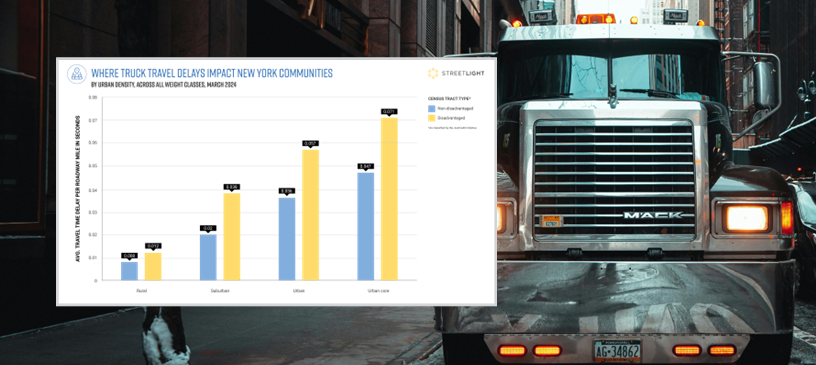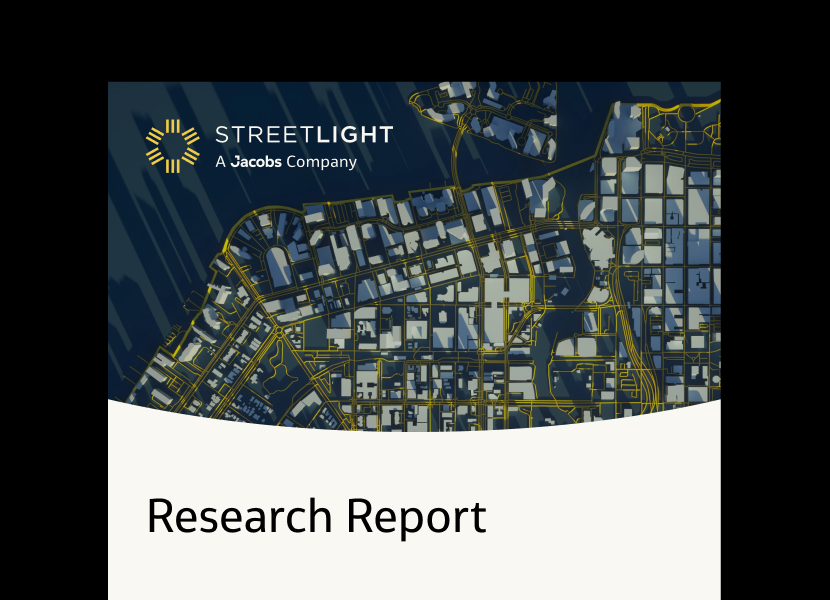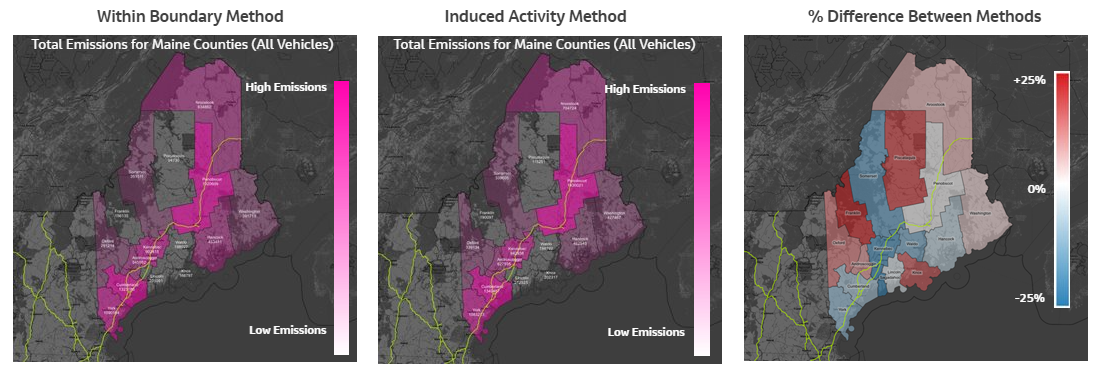GHG measurement
Actionable GHG analysis to achieve carbon goals
Utilize local, data-driven transportation insights when measuring GHG emissions to understand where climate-focused initiatives will have the biggest impact on reductions. Pinpoint key focus areas where priority measures can be implemented to maximize carbon reduction efforts.
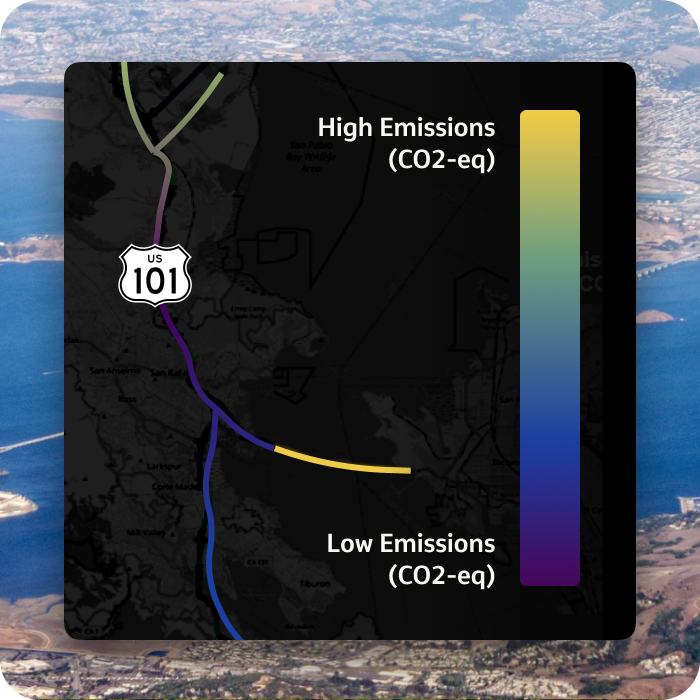
Get detailed and actionable data to reliably measure greenhouse gas emissions
Spend less time on the GHG emissions calculations and more time on developing mitigation strategies to reduce greenhouse gas emissions.
View different methodologies that analyze GHG within your jurisdiction or GHG from induced activity.
Fast access to the exact road-level emissions measurement data points that you need to analyze every region’s carbon footprint.
Break out trip type and vehicle type to see what drives emissions.
Eliminate the need to do a complicated calculation model with instant access to reliable GHG numbers
Get started
Sharing regional transportation emissions data
Read case studyThe Twin Cities Metropolitan Council wanted to measure emission sources and trends over time to provide communities with local GHG data to support mitigation efforts and address climate change locally.
With StreetLight, they segregated vehicle ghg emissions produced by jurisdictions and townships for vehicles and trucks. The Council made the GHG inventory results publicly available online on the Twin Cities Greenhouse Gas Inventory, including data for each of the townships located within the Twin Cities metro. This allows planners to quantify vehicle emissions and select carbon footprint reduction strategies for their jurisdictions.



StreetLight GHG Measurement: At a glance
Get started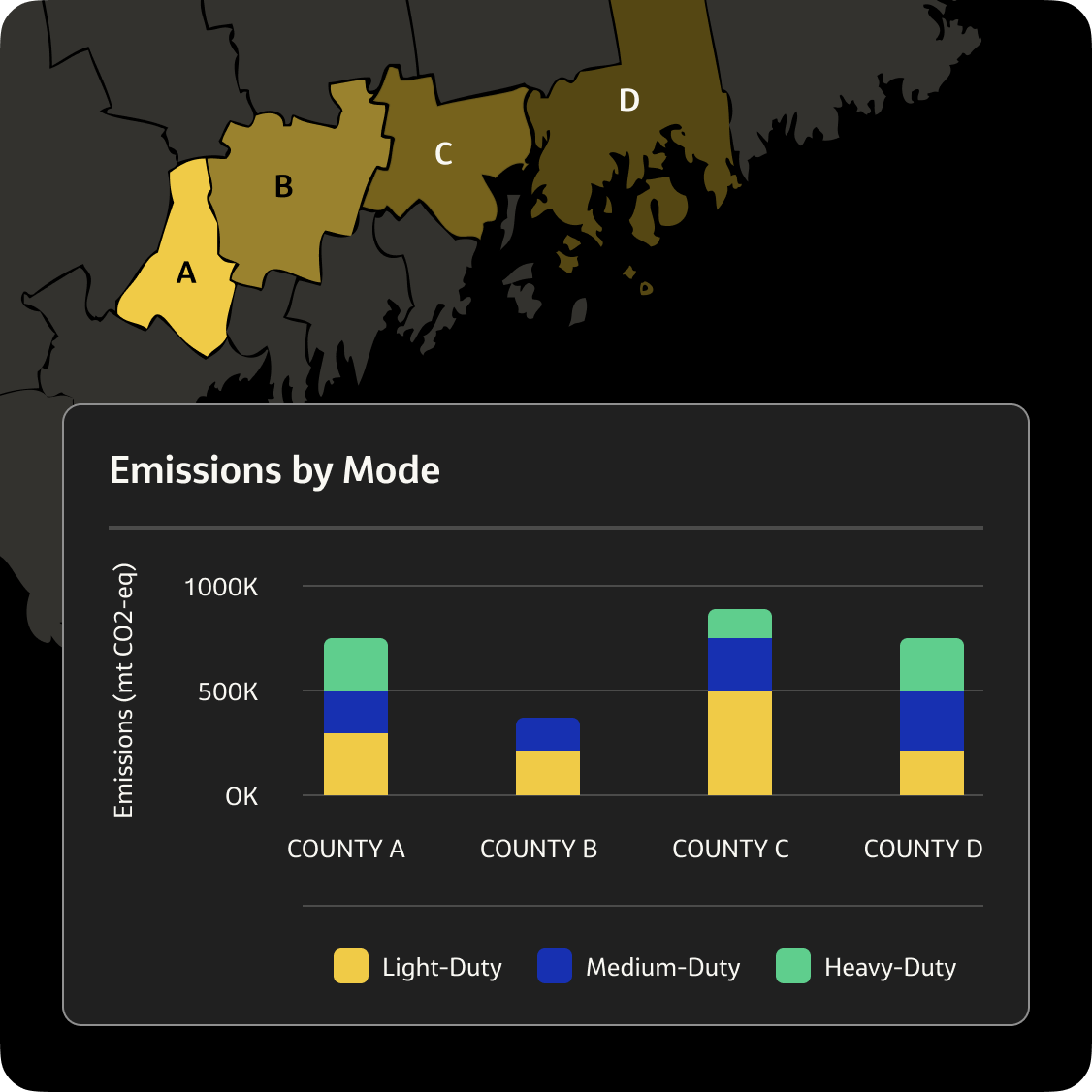




Choose your desired granularity for annual baseline-level GHG data.

View mode-specific impacts with distinct passenger and commercial VMT insights and avoid tailpipe emissions from EVs.

Segment emissions based on different types of traffic (e.g., internal-internal, internal-external, external-internal, external-external) to mitigate carbon.

Target reduction where you can effect change with the ability to include or exclude pass-through trips outside your region’s influence.
Check out other StreetLight products
Access our full suite of tools, visualizations, and monitoring systems to solve all your most pressing transportation climate challenges.
Harness recent region-wide transportation data to plan EV infrastructure that taps into the fast-growing market demand.
See the impact of biking and walking activity in seconds with insights for your entire region across time.
Ensure the efficient movement of vehicles and goods with the industry’s most robust freight data for all roads.
Solve bottlenecks with quick access to multi-year traffic insights for all your roads in one easy-to-use platform.


Resources
Explore our library
Case studies, data-driven research, and timely articles to learn how StreetLight helps solve climate challenges.
Our сustomers
See why they chose StreetLight

FAQs
Quick answers to questions you may have
Discover everything about StreetLight’s GHG Measurement product features, benefits, and more.
Greenhouse gas (GHG) measurement uses data on known emissions factors to understand the total volume of greenhouse gasses that are emitted by human activity in a given area. In the transportation industry, GHG measurement is mainly focused on measuring tailpipe emissions from internal combustion engine (ICE) vehicles, including personal vehicles and commercial trucks.
In transportation, greenhouse gas emissions are typically measured by total Vehicle Miles Traveled (VMT) within a specific area and time frame. Different fuel types (e.g., gas vs. diesel) have varying fuel efficiency and emissions, so truck activity (mainly diesel) is often calculated separately from personal vehicles (mainly gas). EV adoption rates are also considered to determine the proportion of vehicles producing tailpipe emissions.
Detailed VMT trip types (e.g., internal-internal) help determine which vehicle trips contribute to an area’s total emissions. For instance, a trip passing through City B on its way from City A to City C may not count towards City B’s emissions, as it’s not the trip’s origin or destination.
StreetLight’s platform can provide the data you need to calculate greenhouse gas (GHG) emissions in your region, including VMT broken out by trucks vs. personal vehicles, EV avoided emissions, trip types (e.g., internal-internal, internal-external, external-internal, external-external), and induced-activity method vs within-boundary method.
GHG emissions are measured by total weight of CO2 or CO2 equivalent (CO2e) greenhouse gasses emitted in a given area. CO2e is used in order to account for the different levels of Global Warming Potential (GWP) of different gas emissions (such as methane or nitrous oxide) compared to the same amount of carbon dioxide.
GHG emissions are often measured in metric tons or kilograms of CO2e.
Do you need data to inform your next project?
Talk to StreetLight about your needs, and join us in shaping a more efficient, sustainable world.
Here are some resources to help you go a step further:
